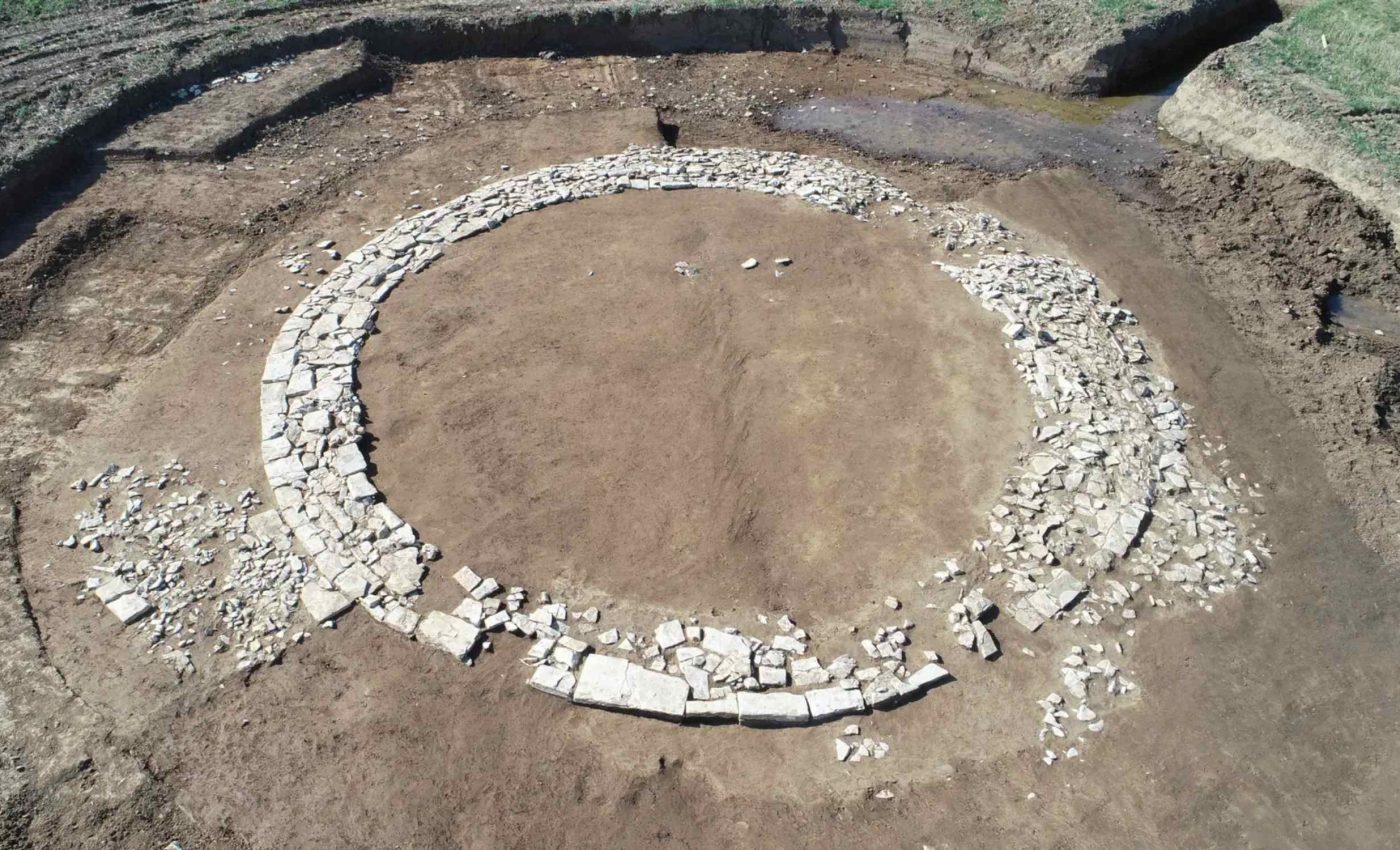
Archaeologists discover an 'extremely rare' Roman tomb in Germany
Archaeologists in Germany have uncovered a Roman tomb on a circular stone foundation, roughly 39 feet wide, near the municipality of Wolkertshofen. The structure appears to be a tumulus, a circular burial mound built with a stone ring.
What stunned the team was the emptiness. No bones or grave goods turned up, and the circle sits beside a Roman route that once cut across this part of southern Germany.
Finding an empty Roman tomb
The work was led by Prof. Mathias Pfeil, General Conservator at the Bavarian State Office for Monument Preservation (BSOMP). His research focuses on safeguarding Bavaria’s archaeological heritage and explaining it to the public.
Archaeologists were surprised to find a funerary monument of this age and scale in the region. According to Prof. Pfeil, the tomb likely served both as a place of remembrance and as an expression of social status.
Archaeologists also recorded a square stone base roughly 6.6 feet on a side attached to the circle’s south edge. It likely carried a stele, a tall stone marker used for names or images.
The stonework is careful and consistent, a sign of skilled labor and a clear budget. That level of effort suggests a family with means who wanted a durable memorial in a public facing spot.
Why a cenotaph makes sense
With no remains or offerings inside, the most reasonable reading is a cenotaph, an empty Roman tomb used to honor someone buried elsewhere.
Empty memorials were not unusual in the Roman world when a body was lost, moved, or interred in a different family plot. The Wolkertshofen ring’s visibility by the road would have kept the person’s memory active in daily travel.
Cenotaphs also solved practical problems for families scattered across estates and towns. A marker along a route allowed relatives, workers, and visitors to pay respects without traveling far.
This interpretation fits the site’s emptiness and its clean architectural footprint. It also aligns with the way Romans tied remembrance to places people actually passed.
A road, a villa, and a message
A preserved Roman road segment nearby ran from the fort at Weißenburg to the market center at Nassenfels. That context matters because the Wolkertshofen circle sits in the same corridor.
Close by, archaeologists have long known of a Roman country estate near Möckenlohe, excavated in the 1990s. That site shows a prosperous operation with heated rooms and imported goods.
A villa rustica, a rural farm estate run for profit, anchored landholdings outside walled towns. Estates like this linked agriculture, trade, and local elites who invested in public facing monuments.
Placing a memorial on a traveled route near an estate would have sent a clear signal. The family remembered their dead and made sure everyone else did too.
How Roman tombs signaled status
Across the northwestern provinces, archaeologists have traced how tombs near villas worked as social markers. One study shows families using tumuli in estate landscapes to display continuity and rank.
That reading dovetails with Pfeil’s note about remembrance and status. A high quality ring wall and a pedestal for a marker say as much about the living as the dead.
The site also sits in ancient Raetia, the Roman province that covered much of today’s Bavaria and parts of Switzerland and Tyrol, with forts, roads, and farms threading the frontier. In this border zone, visibility mattered because power and identity were always on display.
Seen that way, a conspicuous circle by a busy route becomes a statement. It projects family memory into public space where it cannot be ignored.
Why this matters for Raetia
Roman style tumuli are known from Central Europe and Italy, but examples of this size are scarce in Germany. Finds in Bavaria are more often earlier mounds from the Bronze or Iron Age, not Roman era constructions of this scale.
Roman funerary monuments commonly stood along roads beyond settlement edges, where travelers saw names and images every day. A museum notes that tombs and memorials lined approaches to towns, mixing memory with movement.
That tradition makes the Wolkertshofen circle more than a local curiosity. It connects Bavaria to a Roman habit of building memory into the landscape of travel.
The ring’s careful masonry also hints at Mediterranean inspiration, where stone retaining walls supported earthen mounds. Local builders could adapt that style while using nearby stone and familiar tools.
Lessons from Wolkertshofen
Archaeologists will map the area to look for ditches, postholes, or paving that once framed the mound. Noninvasive geophysics can spot hidden features without disturbing the ground.
Soil specialists may test sediments inside and around the circle for burned traces or microscopic remains. Even a few charcoal flecks can point to ritual fires held at the monument.
Architectural analysis will examine tool marks and stone sourcing to learn how the wall was raised. Those clues can place the build in a tighter time window within the Roman period.
The setting may yield just as much as the circle itself. Roadside finds and estate debris can show who passed here, what they carried, and how the memorial fit their world.
—–
Like what you read? Subscribe to our newsletter for engaging articles, exclusive content, and the latest updates.
Check us out on EarthSnap, a free app brought to you by Eric Ralls and Earth.com.
—–













